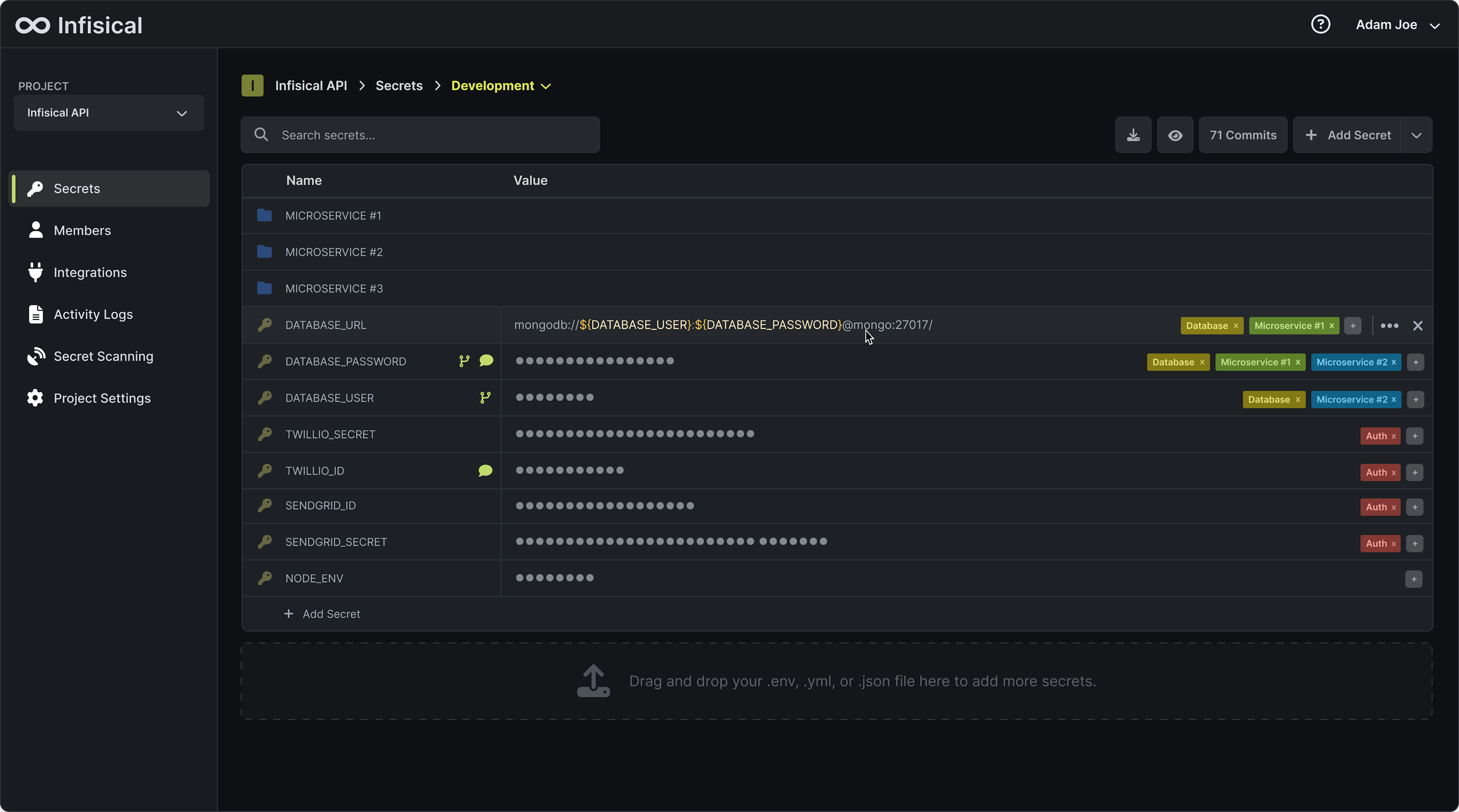
What is Secret Management? Definition and Best Practices
Introduction
In the fast-paced digital era, protecting sensitive information is crucial for any business. This is where secret management plays a pivotal role. It's more than just password protection; it's about safeguarding the critical credentials that keep our digital systems secure.
What is Secret Management?
Secret management involves managing and protecting digital credentials like passwords, API keys, encryption keys, and tokens. These are the linchpins of secure access to IT systems, databases, and applications.

Why is Secret Management So Important?
1. Ensuring Robust Security Against Cyber Threats
- Guarding Against Data Breaches: The most compelling reason for secrets management is its role in preventing data breaches. Secrets like passwords and encryption keys are often the target of cyber attacks. If these are compromised, it can lead to unauthorized access and potential data theft.
- Mitigating Insider Threats: Not all threats come from outside an organization. Secret management also guards against insider threats by restricting access to sensitive information. This includes ensuring that employees only have access to the information necessary for their roles.
- Protecting Customer Data: In many industries, customer data is both sensitive and valuable. Effective secret management ensures that this data remains secure, maintaining customer trust and avoiding reputational damage.
2. Compliance with Regulatory Standards
- Meeting Industry Regulations: Many industries are governed by regulations that mandate the protection of sensitive data. For example, the healthcare industry has HIPAA in the U.S., while the finance sector has regulations like GDPR in Europe and SOX in the U.S. Secret management is a key part of complying with these regulations.
- Avoiding Legal and Financial Penalties: Failure to comply with these regulations can result in severe legal and financial repercussions. Proper secrets management helps in avoiding these penalties by ensuring that sensitive data is handled according to legal standards.
3. Supporting Automation and Technological Advancement
- Facilitating Secure Automation: As businesses automate more processes, the need for secure, automated management of secrets grows. Automated systems often require access to sensitive data, and managing these secrets securely is crucial for the integrity of these systems.
- Enabling Cloud and Hybrid Environments: With the shift towards cloud and hybrid IT environments, secret management becomes even more important. These environments often involve multiple platforms and services, each requiring secure authentication methods.
- Scalability and Flexibility: Effective secret management system allows organizations to scale their operations securely. As companies grow and adapt, they can add new services and technologies without compromising on security.

The Challenges to Secret Management
1. Managing the Growing Volume of Secrets
- Increased Complexity with Expansion: As organizations grow, they often find themselves dealing with an increasing number of secrets. This can include passwords, API keys, and encryption keys, each needing to be managed and protected. The sheer volume makes tracking and securing these secrets more complex (this is problems is also known as secret sprawl).
- Diverse Types of Secrets: Different types of secrets (like database credentials, API tokens, and private keys) often require different handling procedures. Managing this diversity efficiently without compromising security poses a significant challenge.
2. Maintaining Consistency Across Diverse IT Environments
- Multiple Platforms and Environments: Modern IT environments often include a mix of cloud services, on-premises servers, and hybrid systems. Each of these environments has its own security protocols and requirements, making consistent secret management a complex task.
- Integration with Existing Systems: Integrating secret management solutions into existing IT infrastructures without causing disruptions or security loopholes is a delicate balance to achieve.
3. Ensuring Strict Access Control and Authentication
- Balancing Access and Security: Determining who has access to what secrets is a critical aspect of secret management. It involves not just assigning access, but also continuously monitoring and adjusting it as roles and privileged access requirements change within the organization.
- Authentication Protocols: Implementing robust authentication mechanisms for accessing secrets, such as multi-factor authentication, can be challenging but is essential for heightened security.
4. Adapting to Rapid Technological Changes
- Keeping Up with Advancements: The IT landscape is continually evolving. Adapting secret management strategies to keep up with new technologies and threats is a constant challenge.
- Emerging Security Threats: Cyber threats are continuously evolving. Secret management strategies must be agile enough to adapt to new types of attacks and vulnerabilities.
5. Auditing and Compliance
- Tracking and Auditing Access: Regularly auditing who accessed what secret and when is crucial for security and compliance. However, setting up comprehensive audit logs and auditing mechanisms that don't interfere with productivity can be challenging.
- Compliance with Regulations: Acheiveing data security and staying compliant with various industry-specific regulations requires constant vigilance and adaptation of secret management practices.
6. Human Factor and Error
- Reducing Human Error: Even with automated systems, the human factor remains a significant risk. Educating employees and ensuring they follow best practices in secret management is a continual process.
- Insider Threats: Monitoring and preventing insider threats, intentional or accidental, is a complex aspect of secret management.

Best Practices for Effective Secret Management
1. Prioritize Encryption of Secrets
- Encryption at Rest and in Transit: Always encrypt secrets, not only when they are stored (at rest) but also when they are being transmitted (in transit). This dual-layer of encryption protects against different types of potential breaches.
- Implementing Strong Encryption Standards: Use industry-standard encryption algorithms and regularly update them to ensure they remain secure against emerging threats.
2. Implement Rigorous Access Control
- Principle of Least Privilege: Grant access to secrets strictly on a need-to-know basis. Only individuals whose roles require access to specific secrets should have it, and their level of access should be the minimum necessary for their tasks.
- Regular Review and Revocation of Access Rights: Periodically review who has access to what secrets and revoke access that is no longer needed, especially when employees change roles or leave the organization.
3. Conduct Regular Auditing and Monitoring
- Audit Trails: Maintain comprehensive logs of when and how secrets are accessed. This helps in tracking unauthorized access, preventing secret sprawl, and understanding the context of legitimate access.
- Real-time Monitoring: Implement systems that can monitor secret access in real-time and alert administrators to unusual patterns that might indicate a security threat.
4. Implement Routine Rotation of Secrets
- Scheduled Secret Changes: Regularly change secrets to reduce the risk of them being compromised. This practice is especially important for highly sensitive systems or in the aftermath of a security incident.
- Automated Secret Rotation: Where feasible, use automated tools to rotate secrets and generate dynamic secrets, which reduces the potential for human error and ensures timely updates.
5. Leverage Automation for Secret Management
- Automated Tools for Secret Distribution and Rotation: Use automated tools to distribute and rotate secrets. This reduces the likelihood of human error, such as accidentally exposing a secret.
- Integration with DevOps and IT Workflows: Integrate secret management tools into existing DevOps and IT workflows to ensure seamless and secure operations.
6. Establish Strong Password Policies
- Complexity and Uniqueness: Encourage or enforce the creation of complex and unique passwords to reduce the risk of brute-force attacks.
- Regular Password Changes: Mandate regular password changes, while avoiding the reuse of old passwords.
7. Provide Comprehensive Training and Awareness
- Employee Education: Regularly educate employees about the importance of secrets management and best practices to follow, which can significantly reduce the risk of human-induced breaches.
- Creating a Culture of Security: Foster a company culture that prioritizes security, where protecting secrets is seen as a collective responsibility.
Tools to Aid with Secret Management
In the realm of secret management, various tools knows as vaults like HashiCorp Vault and Infisical offer robust solutions to safeguard sensitive digital credentials. Among these, Infisical is an open source secrets management platform. It emerges as a noteworthy solution, particularly for its user-friendly interface and advanced security features. It specializes in providing a highly secure environment for storing and managing secrets with an emphasis on ease of use and integration flexibility. This makes Infisical an excellent secret manager for businesses looking for a balance between advanced security and user accessibility in their secret management practices.

Conclusion
Secret management is an indispensable part of IT security in today's digital world. Understanding and implementing strong secret management practices not only protects an organization's data but also enhances its integrity and trustworthiness. Using a great secret manager can help achieve a great level of security while maximizing efficiency for an organization. It's a critical component in the overall strategy to safeguard digital assets and maintain operational continuity.

